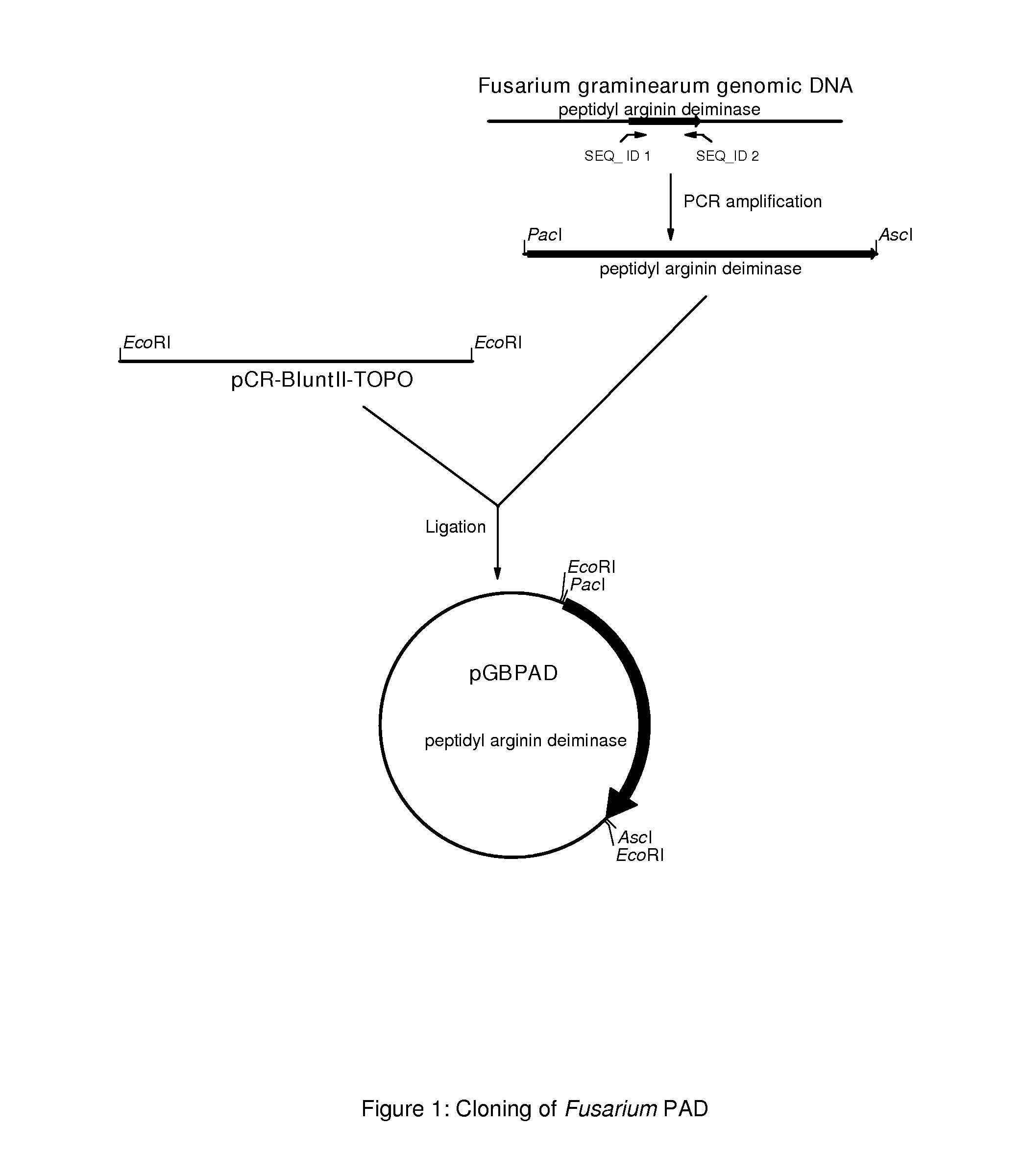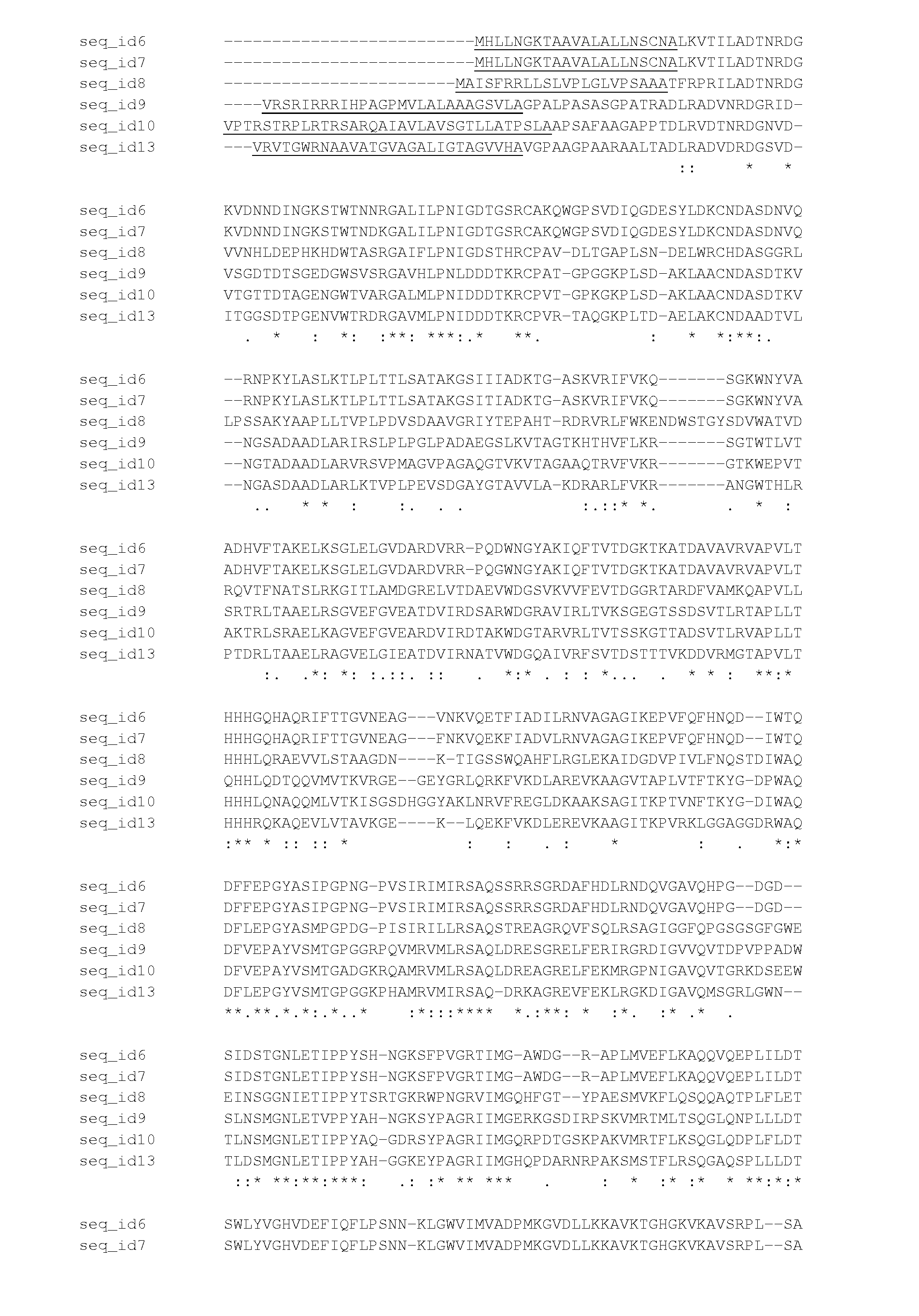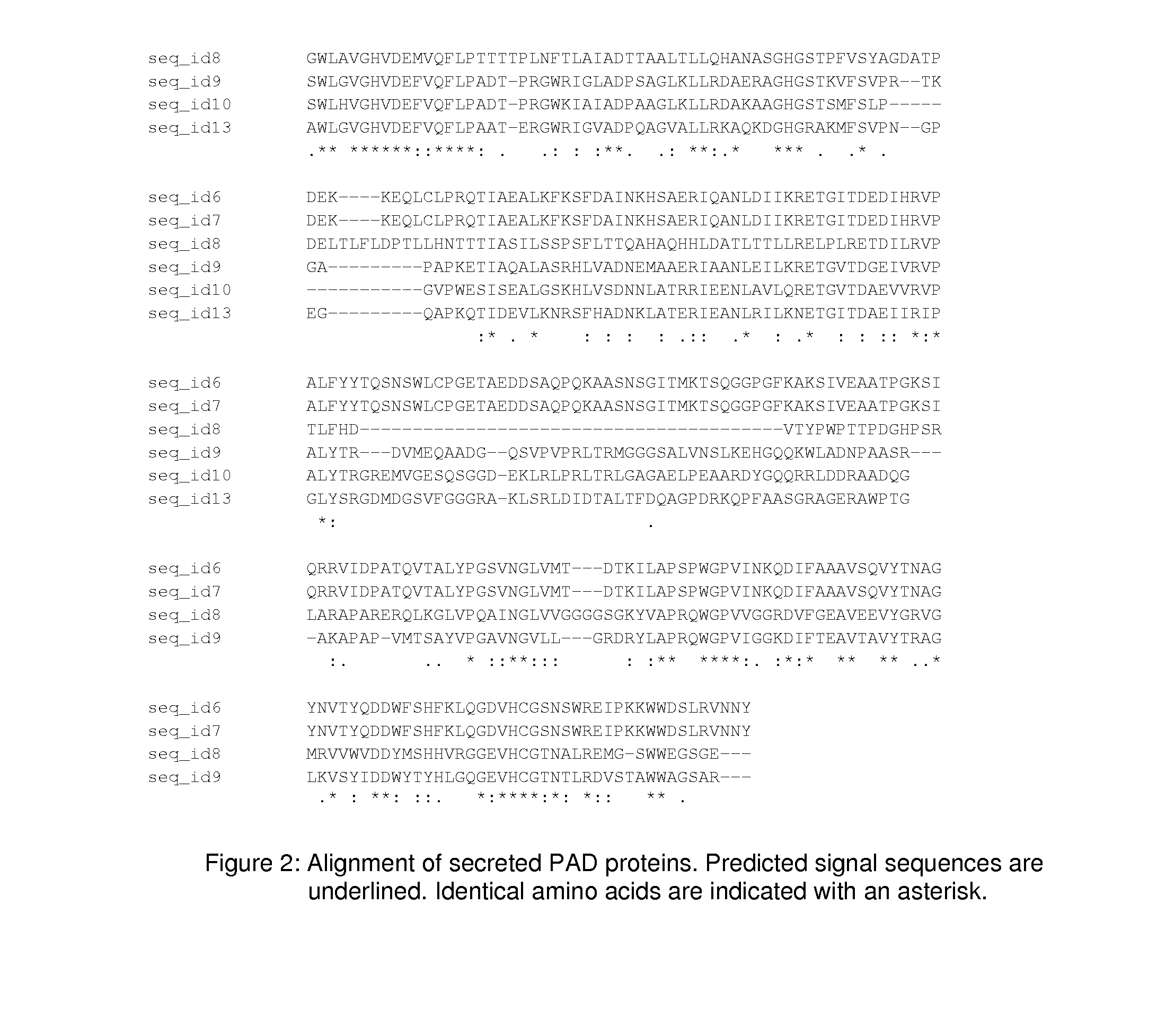Peptidylarginine deiminase and uses thereof in the production of citrullinated proteins and peptides
a technology of citrullinated proteins and arginine deiminase, which is applied in the field of citrullinated proteins and peptides, can solve the problems of insufficient citrulline-arginine reaction in the kidney, inability to use free amino acids in clinical nutrition, and involvement of additional mechanisms
- Summary
- Abstract
- Description
- Claims
- Application Information
AI Technical Summary
Benefits of technology
Problems solved by technology
Method used
Image
Examples
example 1
Fusarium Strains can Secrete a PAD-Like Activity
[0192]A large collection of moulds was screened with the aim of identifying a secreted PAD-like activity. To that end strains were pre-grown for 4-5 days at 30 degrees C. on Potato Dextrose Broth (PDB; Difco). Then, cultures were harvested by centrifugation, washed with distilled water and transferred to a minimal medium enriched with rice protein hydrolysate. Rice protein is relatively rich in arginine residues and to increase its water solubility, the rice protein (Remy Industries, Leuven, Belgium) was pre-incubated with Alcalase (NOVO, Bagsvaerd, Denmark) at pH 7.5 to obtain a hydrolysate with a DH of approx 15. The minimal growth medium as used contained 0.52 g KCl, 1.52 g KH2PO4, 1.3 ml 4M KOH, 0.52 g MgSO4.7H2O, 22 mg ZnSO4.7H2O, 11 mg H3BO3, 5 mg FeSO4.7H2O, 1.7 mg CoCl2.6H2O, 1.6 mg CuSO4.5H2O, 5 mg MnCl2.4H2O, 1.5 mg Na2MoO4.2H2O, 50 mg EDTA, 40 g glucose and 5 g of hydrolyzed rice protein per liter. After growing the fungi fo...
example 2
Identifying PAD Encoding Genes in a Fusarium Genome Sequence
[0193]Knowing that some Fusarium strains can secrete a PAD-like activity, the genome sequence of the genes encoding these PAD's were isolated and analyzed. To do this, Fusarium graminearum strains CBS166.57, CBS316.73, CBS11063, CBS18432 and CBS792.70 were grown for 3 days at 30 degrees Celsius in PDB (Potato dextrose broth, Difco) and chromosomal DNA was isolated from the mycelium using the Q-Biogene kit (catalog nr. 6540-600; Omnilabo International BV, Breda, the Netherlands), using the instructions of the supplier. This chromosomal DNA was used for the amplification of the coding sequence of the PAD genes using PCP.
[0194]To specifically amplify the PAD gene from the chromosomal DNA of Fusarium graminearum strains CBS66.57, CBS316.73, CBS11063, CBS18432 and CBS799.70, two PCR primers were designed. Primer sequences were partly obtained from a sequence that was found in the genomic DNA of Gibberella zeae PH-1 and annotated...
example 3
Over Expression of a Putative Fusarium Graminearum PAD by Aspergillus Niger
[0202]From the pGBPAD plasmid containing the genomic PAD gene from Fusarium graminearum CBS166.57, the Pacl / Ascl fragment comprising the PAD coding sequences was isolated and exchanged with the Pacl / Ascl phyA fragment in pGBFIN-5 (WO 99 / 32617). Resulting plasmid is the PAD expression vector named pGBFINPAD (see FIG. 3). The expression vector pGBFINPAD was linearized by digestion with Notl, which removes all E. coli derived sequences from the expression vector. The digested DNA was purified using phenol:chloroform:isoamylalcohol (24:23:1) extraction and precipitation with ethanol. These vectors were used to transform Aspergillus niger CBS513.88. An Aspergillus niger transformation procedure is extensively described in WO 98 / 46772. It is also described how to select for transformants on agar plates containing acetamide, and to select targeted multicopy integrants. Preferably, A. niger transformants containing ...
PUM
| Property | Measurement | Unit |
|---|---|---|
| molecular weight | aaaaa | aaaaa |
| temperature | aaaaa | aaaaa |
| temperature | aaaaa | aaaaa |
Abstract
Description
Claims
Application Information
 Login to View More
Login to View More - R&D
- Intellectual Property
- Life Sciences
- Materials
- Tech Scout
- Unparalleled Data Quality
- Higher Quality Content
- 60% Fewer Hallucinations
Browse by: Latest US Patents, China's latest patents, Technical Efficacy Thesaurus, Application Domain, Technology Topic, Popular Technical Reports.
© 2025 PatSnap. All rights reserved.Legal|Privacy policy|Modern Slavery Act Transparency Statement|Sitemap|About US| Contact US: help@patsnap.com



